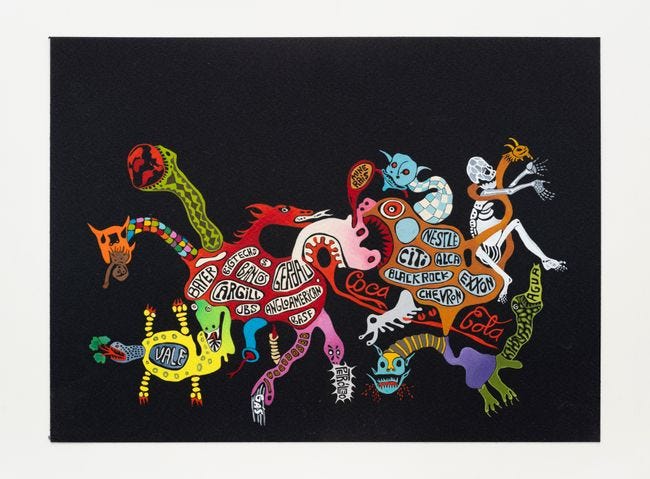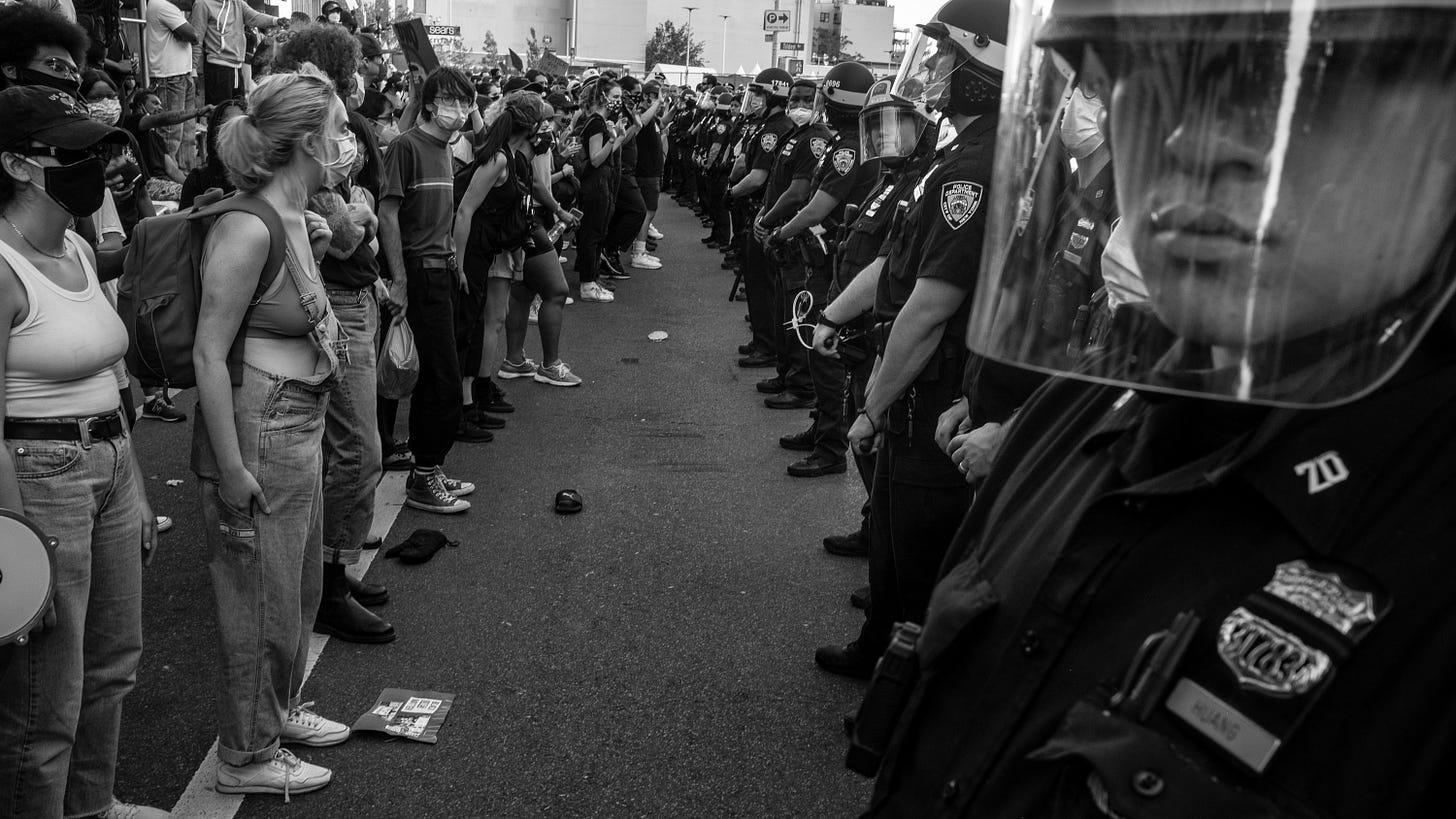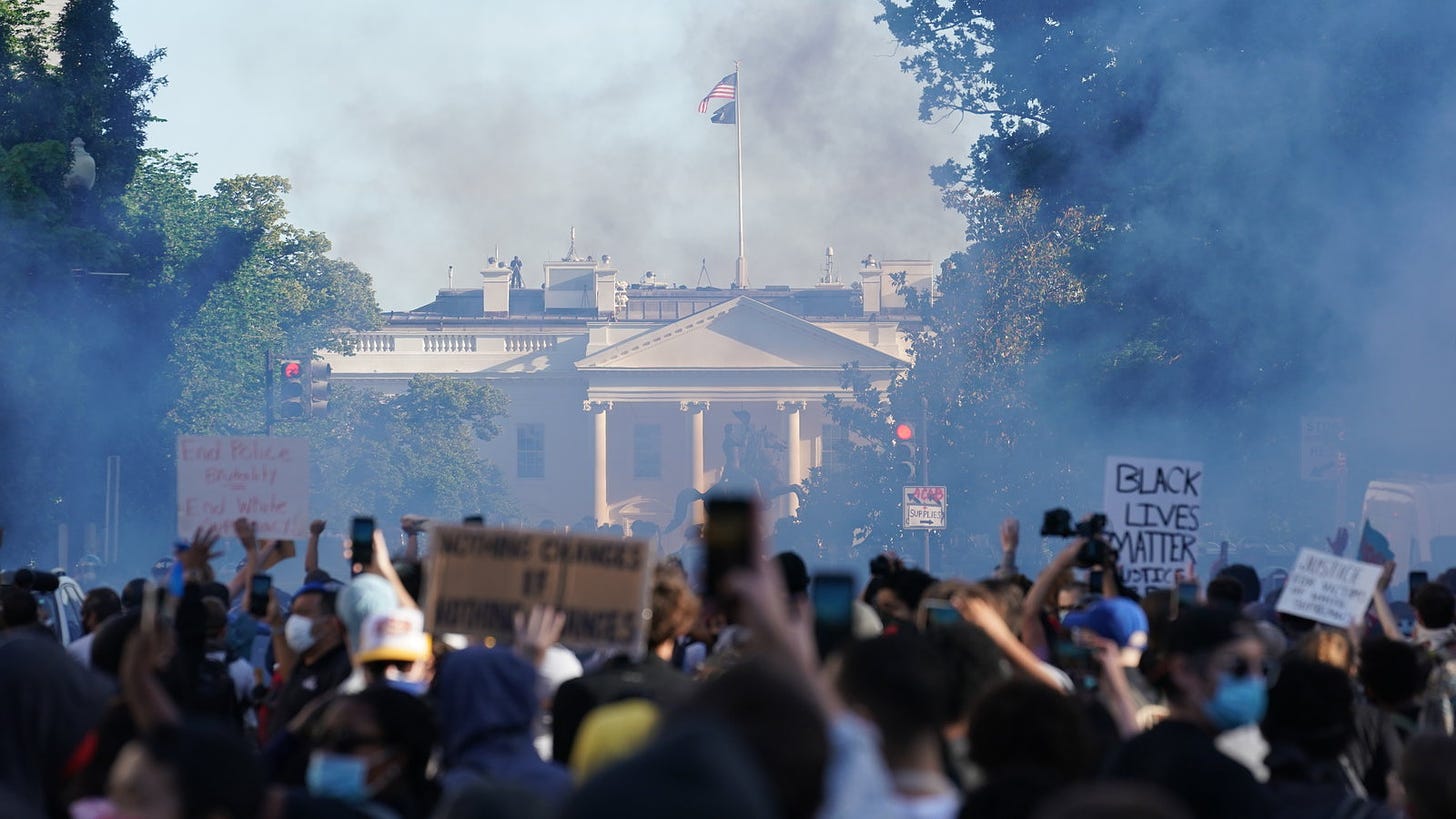As liberals prepare for the historic, democracy-saving installation of President Harris, we might take a second to reflect on what the preceding 50 years of imperial inclusion have actually won oppressed communities.
Or rather, how much oppressed communities have lost. You’d think two generations of community uplift and political representation would have some measurable impacts on the people getting lifted up. Not just for a sliver of community members who get spots in local government, corporate hierarchies, or elite universities, but for the masses in working-class urban communities of color whose revolts in the late 1960s set the whole corporate diversity counterinsurgency machine in motion.
Community organizations tout decades of empowerment and inclusion work. Major American cities have been controlled by Black and brown Democrats for decades. While the uprisings of the 1960s faced off against all-white city governments commanding all-white police departments, the subsequent half-century has been blessed us with billions of dollars of non-profit grants and diversity initiatives.
Think about it: for fifty years, the wealthiest corporate foundations in human history and the most powerful government on the planet have been trying their darnedest, we’re told, to really address the systemic roots of inter-generational poverty and institutional racism.
Now, structural oppression is a very complicated problem that many well-meaning people are working very hard to fix. But let’s be real for a second. You know what else was a very complicated problem? Figuring out how to send three dudes 4.5 million miles through the cold expanse of space before pocket calculators were even invented. When the US government decided they wanted to put white people on the moon in the 1960s, they figured that out in 8 years.
In 1966, the Black Panther Party demanded:
1. We Want Freedom. We Want Power to Determine the Destiny of Our Black Community.
2. We Want Full Employment for Our People.
3. We Want An End to the Robbery By the Capitalists of Our Black Community.
4. We Want Decent Housing Fit For The Shelter of Human Beings.
5. We Want Education for Our People That Exposes The True Nature Of This Decadent American Society. We Want Education That Teaches Us Our True History And Our Role in the Present-Day Society.
6. We Want All Black Men To Be Exempt From Military Service.
7. We Want An Immediate End to Police Brutality and the Murder of Black People.
8. We Want Freedom For All Black Men Held in Federal, State, County and City Prisons and Jails.
9. We Want All Black People When Brought to Trial To Be Tried In Court By A Jury Of Their Peer Group Or People From Their Black Communities, As Defined By the Constitution of the United States.
10. We Want Land, Bread, Housing, Education, Clothing, Justice And Peace.
The radical movements fought for community health clinics and popular education and people’s housing. 50 years later, these demands aren’t seriously articulated as immediate political goals by even the most militant members of the radical left. Contemporary struggles against gentrification aren’t fighting for our comm
unities to be improved, to gain power or resources or health care or schools. We are saying, let us have the same inadequate housing, the same underfunded schools, the same over-policing and capitalist robbery, just please don’t raise my rent to three times what it is today. And the entirety of the political class still unites to deny this, the most modest request imaginable.
This is the extent of how much we have lost, how far backwards we have gone during five decades of corporate charity and token political representation. The communities that once demanded radical improvements now often lose the war for simple survival.
And yet…
“Abolition” and “mutual aid” were unknown concepts for almost everybody before a few weeks in the summer of 2020. Politics reckoning with or even acknowledging the existence of economic class in the United States were extreme fringe beliefs before the Sanders campaign walked through the opening that Occupy Wall Street created in just 59 days back in 2012. (And all those now-hip socialist parties that brag about their proud lineage of struggle stretching back to time immemorial? Yeah, all the way up to 2016, they were still the geriatric book clubs they’d degenerated into post-Reagan.)
All this to say: sometimes, life comes at you fast. Like that one guy maybe said, decades where nothing happens, weeks where decades happen, etc. This isn’t to say that organizing between these revolutionary upsurges is futile. On the contrary. When the George Floyd Rebellion ignited, the bail funds and street medic collectives and insurgent crews didn’t materialize out of nowhere. Stop Cop City protesters were only able to physically hold down the Atlanta forest for months because of knowledge built through decades of illegal forest defense.

The work we do between uprisings doesn’t make the uprisings happen. The work we do between uprisings prepares us for when they do. We are developing capacities, relationships, networks, and competencies for the next crisis. Revolutionary organizing isn’t toiling away to produce revolution. It’s developing what is necessary to catalyze the next proto-revolutionary crisis into something more. What movement capacities would have served that role in 2020? How can we build them now? (I’d recommend Unity & Struggle’s excellent analysis of the rebellion if you’re working through this question.)
This is the place for revolutionary optimism and radical hope. We have no reason to be discouraged by the slow, halting pace of reform within the system because the system is simply fulfilling its function.
We have no reason to despair at how far revolution might seem. Just remember how fantastic the events of summer 2020 would have sounded in early May.
As Mariame Kaba puts it in her conclusion to Let This Radicalize You:
Determine what the next right step is for you. There is always something that is worth doing. Find your lane and push ahead. Make connections with others. Refuse to acquiesce to despair. Imagine your way forward. There are many ways that things can be different in the world, and we don’t know how things will turn out, so we might as well fight like hell for the world we want to inhabit.
History teaches us that relatively small groups of people have been responsible for some of the most consequential societal changes. It’s usually the minority of the minority that engages in struggle in any historical moment. This is reassuring because it means that we don’t have to convince everyone in order to attain critical goals. It leaves room for surprise.
Revolutionary optimism is a sober assessment of the abject failure of reform and a stubborn resolve to demand liberation and collective thriving regardless. It is an offering to our ancestors in struggle. It is the only attitude that honors the autonomous dignity of those who will join that struggle tomorrow. Revolutionary optimism is an openness to life beyond the grasp of the multi-headed hydra of capitalism, a reminder that no matter how fierce our adversaries might be, we may just outlive them yet.
If you’ve found this useful, please like and consider becoming a sustaining subscriber. Let me know what you think in the comments.
This post has been syndicated from In Struggle, where it was published under this address.



